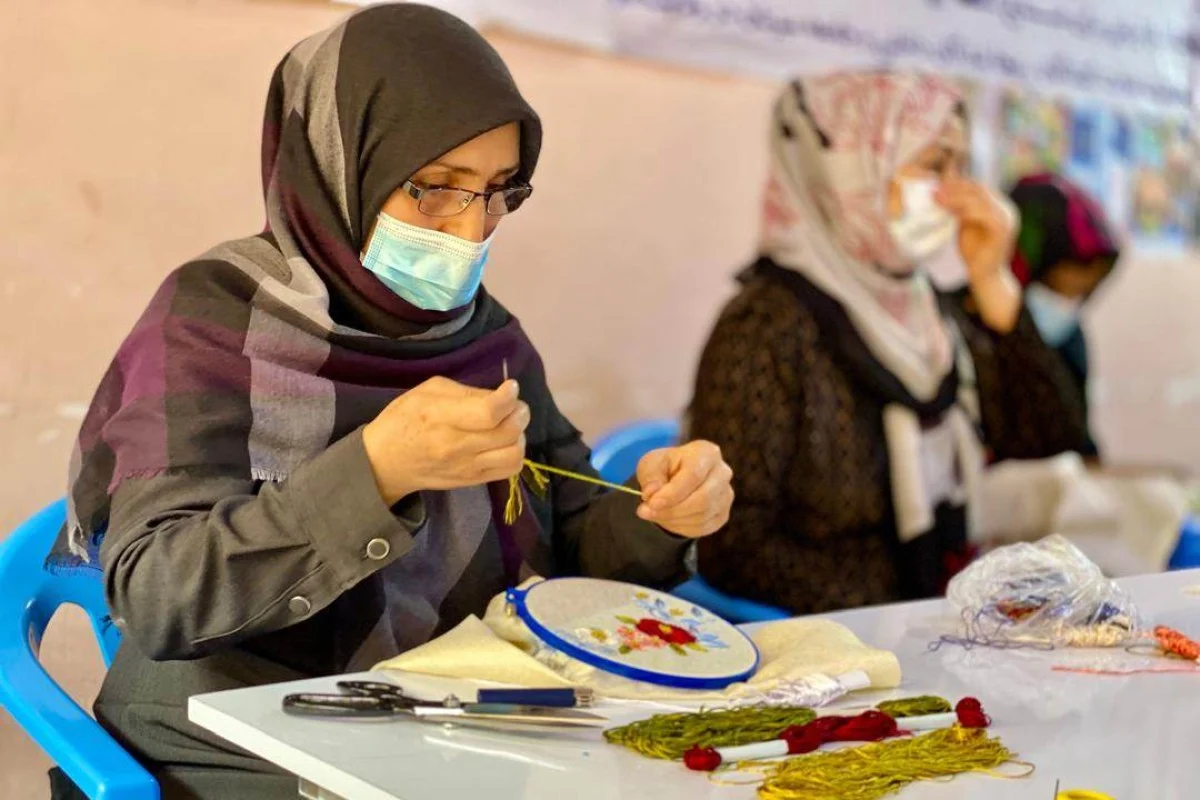In Afghanistan, women become breadwinners selling handmade products to make ends meet

- Afghan women have been relying on their handicraft skills to feed their families, making products like dresses, carved furniture and jewellery to sell
- NGOs and retailers help ensure Afghan women have incomes by providing handicraft workshops and selling handmade items despite Taliban restrictions
Sharifa Hussaini, 33, inserts a needle through silk fabric and pulls the thread taut to stitch floral motifs bursting with colours from red to orange and yellow. Her latest work is a traditional Afghan dress.
Since her husband lost his job as a construction worker following the Taliban takeover in Afghanistan in August 2021, Hussaini has been working 15 hours a day to feed her family of six.
“I thank my mother and grandmother that they taught me this craft while I was a child. Without this skill, I would have failed to feed my family,” Hussaini, who earns around 6,000 Afghan afghanis (US$82) a month, told This Week In Asia.
Ever since the Taliban took power in Afghanistan in 2021, women have not only been barred from studying in secondary schools, colleges and universities, but also refused jobs in professions ranging from teachers and lawyers to bankers and photographers.
In the fourth quarter of 2022, female employment was 25 per cent lower compared with the second quarter of 2021, before the Taliban takeover.
Overall, half a million people have been rendered jobless and around 43 per cent of the population is living on less than one meal a day.
In such trying times, at least 4,000 women artisans like Hussaini, hailing from various Afghan provinces ranging from Kabul to Badghis and Bamiyan, have been using their handicraft skills to feed their families.
The artisans make a range of products to sell at both local and international markets. Oil and pencil paintings, carved wooden furniture, traditional embroidered dresses, jewellery and accessories are among the items made for sale.
In Afghanistan, the handicraft industry contributes 3 per cent of the country’s gross domestic product. Women make up nearly 90 per cent of 1.2 million to 1.5 million Afghans employed in the weaving and wool-spinning sub-sectors of the handmade carpet industry.
Since 2021, the non-profit Women’s Activities and Social Services Association (WASSA), which promotes women’s equal participation in socio-economic sectors, has trained more than 800 women artisans across various provinces through free workshops – lasting six to eight months – on trades including carpet weaving, embroidery, tailoring, wood carving and claypot making.
With the Taliban making it mandatory for women to have a male guardian if they wish to travel further than 72km, many now work from home.
Herat-based calligraphic artist Razia Karimi, 32, who trained at WASSA’s workshops last year, also earns around 6,000 afghanis a month selling her artwork. But Karimi, whose husband has been unemployed since losing his job as a lawyer in August 2021, aims to sell her products to international tourists for better earnings.
Since the Taliban takeover, official data shows nearly 5,000 international tourists have visited Afghanistan’s ancient sites so far.
“Our markets will be back on their feet if the footfall of international tourists increases,” Karimi said. “We are not asking for charity but only a good price for our unique artwork.”
Source: In Afghanistan, women become breadwinners selling handmade products to make ends meet

